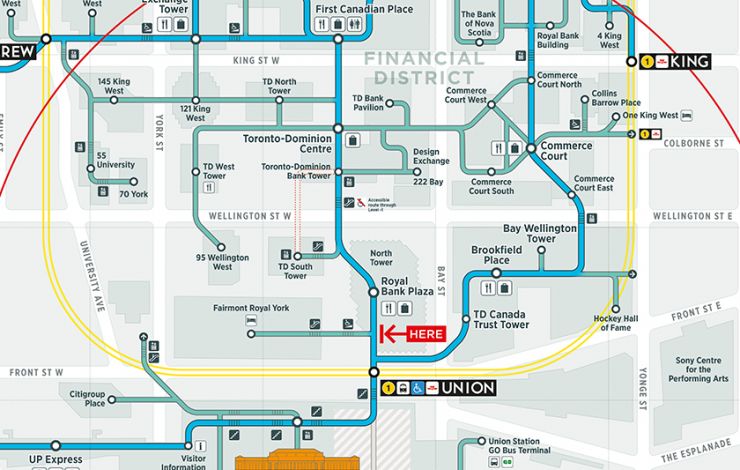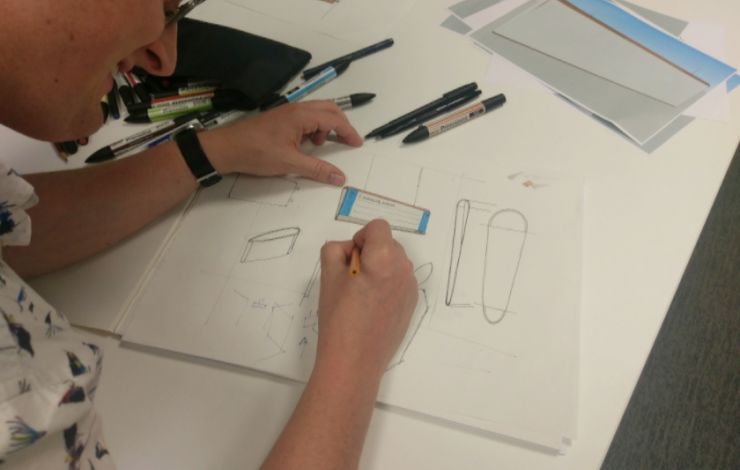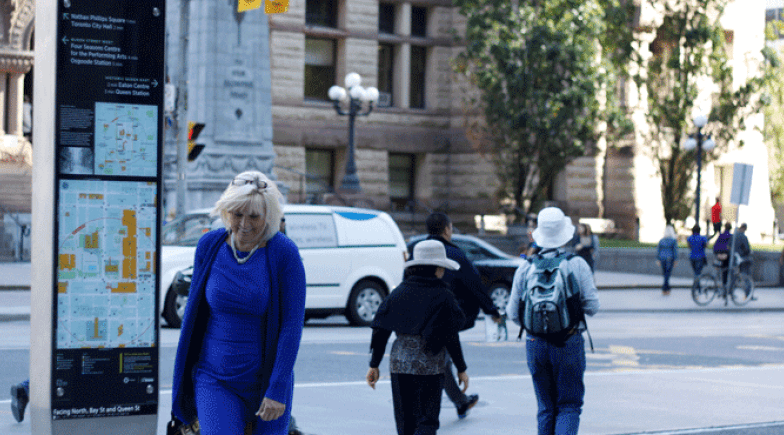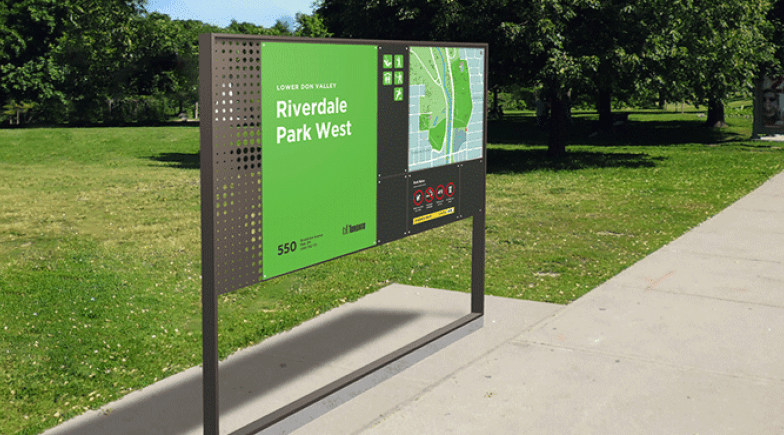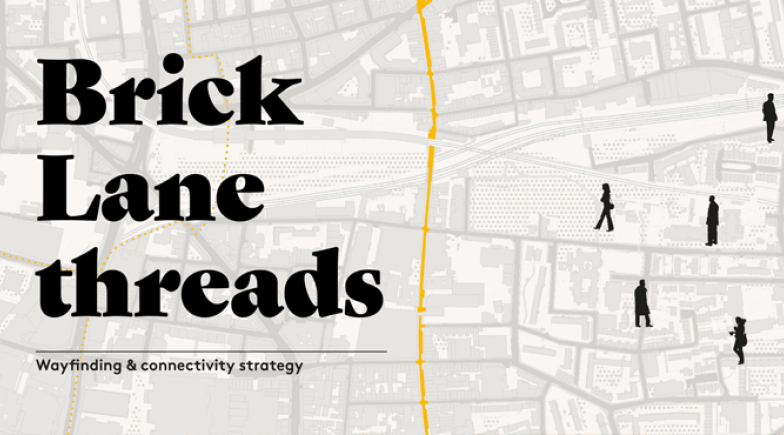Toronto’s PATH is the world’s largest underground retail complex. It connects the office towers in Downtown Toronto, Canada and provides an important contribution to the economic viability of the city's downtown core. The system links seamlessly with public transit, and experiences more than 200,000 business-day commuters, and thousands of additional tourists, visitors and residents.
Steer was commissioned by the Toronto Financial District BIA to develop a functional specification and design concept for an improved PATH wayfinding system to meet the needs of PATH users and key stakeholders.
New PATH maps and signage focus on simplifying navigation within the PATH and getting people to major landmarks and neighbourhoods on the surface linking to the TO360 wayfinding system also designed by Steer’s Design team for the City of Toronto.
The PATH wayfinding system will be built around connector routes – continuous paths that allow users to navigate the entirety of the network – joining transportation hubs like Union Station to major destinations such as Yonge-Dundas Square. Branch routes will reveal retail and other amenities located off the connectors.
For every 1 per cent increase in regular PATH users — which is about 2,000 new users — the PATH generates $17 million in additional tax revenue, $2 million in HST and $285,000 in property tax revenue to the City of Toronto, according to a study completed in May by H. Barry Lyons Consultants Limited, entitled, “Opinion on the Economic Impact of an Improved Path Wayfinding System.”
Development of the concept design continues in 2016 with full implementation of a new system expected in 2018.
